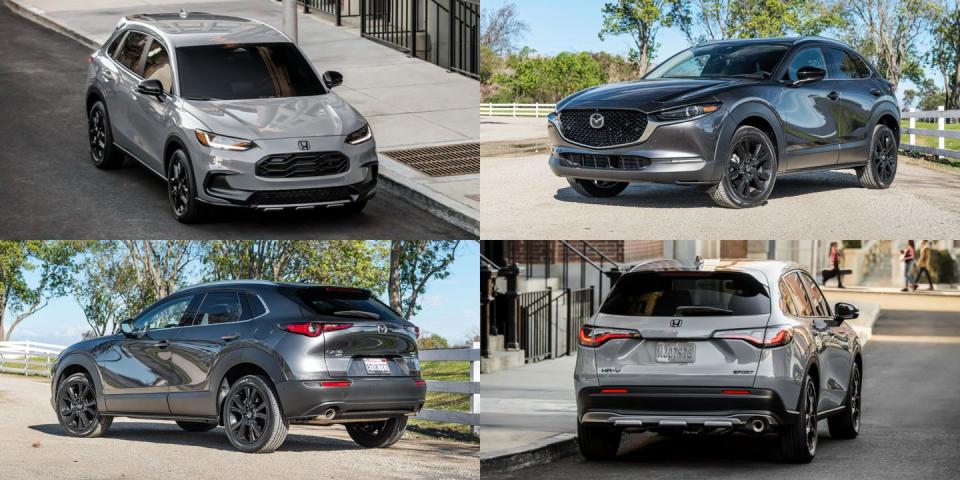Here's How the 2023 Honda HR-V Compares to the Mazda CX-30

The Honda HR-V has been a major player in the subcompact SUV segment for a while now, and it's just received its first redesign. The second-generation HR-V is set to go on sale this month and Honda has provided all the specs including engine information, fuel economy, pricing, trim levels, and features. Armed with this new info about the 2023 model, we decided to compare it to our favorite entry in this segment, the Mazda CX-30. Here's how the two models stack up.
Engine and Transmission
When comparing base engines, the Mazda comes out ahead with its larger 2.5-liter inline-four. The Honda’s 2.0-liter inline-four has 158 horsepower to the Mazda’s 186 horsepower. While we haven’t yet tested the new HR-V, we think it will be slower than the CX-30, which got to 60 mph in 7.5 seconds in our testing. For reference, the 2022 Civic Sport sedan, which has the same engine as the HR-V, only managed an 8.8 second run to 60 mph.
The Mazda comes with a six-speed automatic transmission, while the Honda has a continuously variable automatic transmission. Front-wheel drive is standard on the Honda, with all-wheel drive a $1500 option; the Mazda comes standard with all-wheel drive across the board.
The CX-30 also offers a more powerful turbocharged 2.5-liter inline-four engine, which has 250 horsepower. It was significantly speedier in our testing, getting to 60 mph in just 5.8 seconds.
MPG
The less powerful Honda wins out here, with EPA combined ratings of 28 mpg combined when equipped with front-wheel drive and 27 mpg combined equipped with all-wheel drive. The CX-30 isn’t far behind, with a combined rating of 26 mpg, but opting for the turbo engine drops that rating down to 25 mpg combined.
In our real-world 75-mph highway fuel economy test, the nonturbo CX-30 achieved 31 mpg, matching its EPA highway rating; we haven’t yet been able to test the new HR-V yet.

 Yahoo Autos
Yahoo Autos 